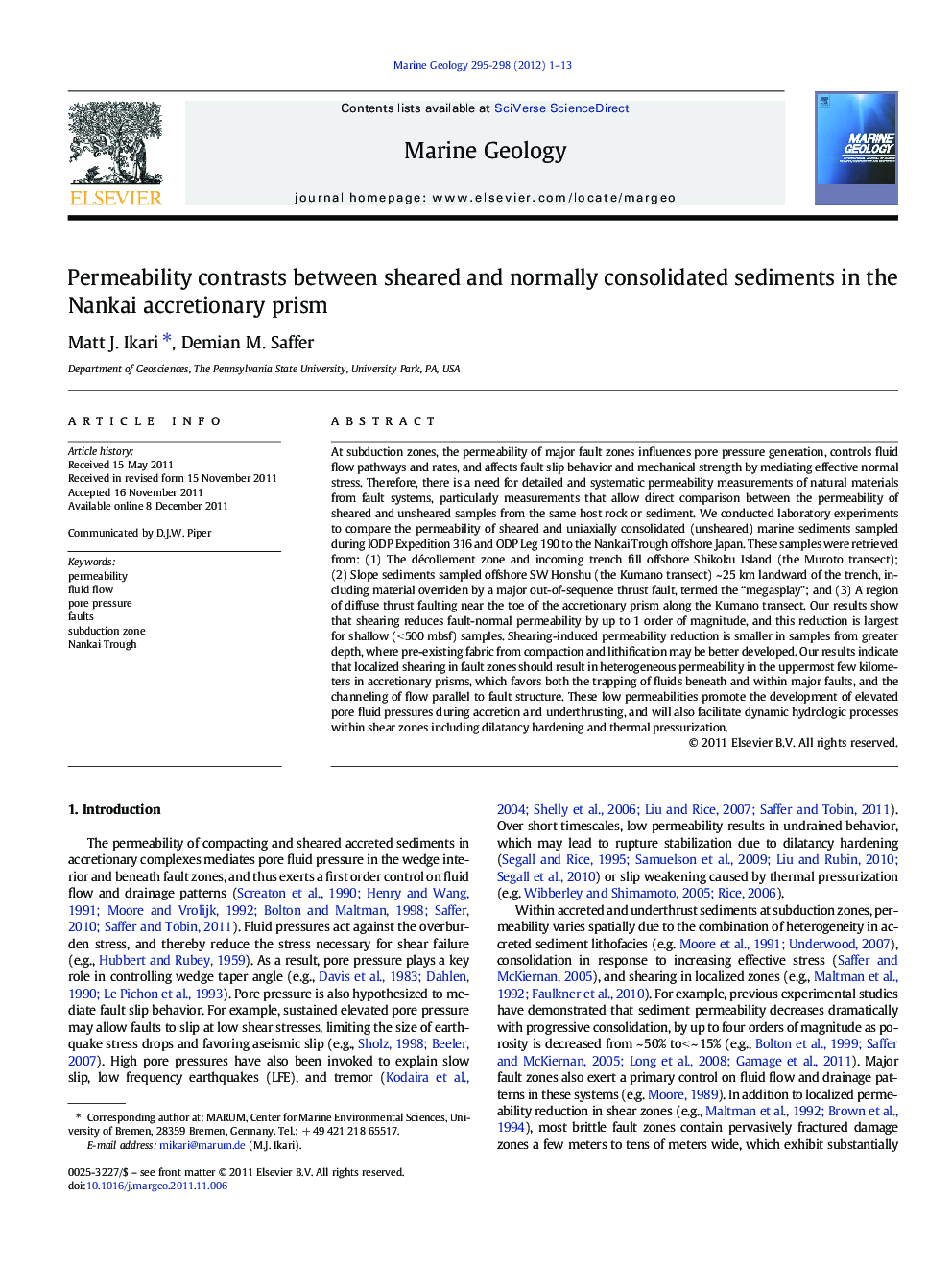| کد مقاله | کد نشریه | سال انتشار | مقاله انگلیسی | نسخه تمام متن |
|---|---|---|---|---|
| 4718611 | 1639128 | 2012 | 13 صفحه PDF | دانلود رایگان |

At subduction zones, the permeability of major fault zones influences pore pressure generation, controls fluid flow pathways and rates, and affects fault slip behavior and mechanical strength by mediating effective normal stress. Therefore, there is a need for detailed and systematic permeability measurements of natural materials from fault systems, particularly measurements that allow direct comparison between the permeability of sheared and unsheared samples from the same host rock or sediment. We conducted laboratory experiments to compare the permeability of sheared and uniaxially consolidated (unsheared) marine sediments sampled during IODP Expedition 316 and ODP Leg 190 to the Nankai Trough offshore Japan. These samples were retrieved from: (1) The décollement zone and incoming trench fill offshore Shikoku Island (the Muroto transect); (2) Slope sediments sampled offshore SW Honshu (the Kumano transect) ~ 25 km landward of the trench, including material overriden by a major out-of-sequence thrust fault, termed the “megasplay”; and (3) A region of diffuse thrust faulting near the toe of the accretionary prism along the Kumano transect. Our results show that shearing reduces fault-normal permeability by up to 1 order of magnitude, and this reduction is largest for shallow (< 500 mbsf) samples. Shearing-induced permeability reduction is smaller in samples from greater depth, where pre-existing fabric from compaction and lithification may be better developed. Our results indicate that localized shearing in fault zones should result in heterogeneous permeability in the uppermost few kilometers in accretionary prisms, which favors both the trapping of fluids beneath and within major faults, and the channeling of flow parallel to fault structure. These low permeabilities promote the development of elevated pore fluid pressures during accretion and underthrusting, and will also facilitate dynamic hydrologic processes within shear zones including dilatancy hardening and thermal pressurization.
► We compare unsheared and sheared permeability of sediments from the Nankai area.
► Shearing in faults can cause significant permeability contrasts at shallow depth.
► Permeability contrasts may cause channelized flow and excess fluid pressure.
► Low permeability affects wedge geometry and pore pressure during fault slip.
Journal: Marine Geology - Volumes 295–298, 15 February 2012, Pages 1–13